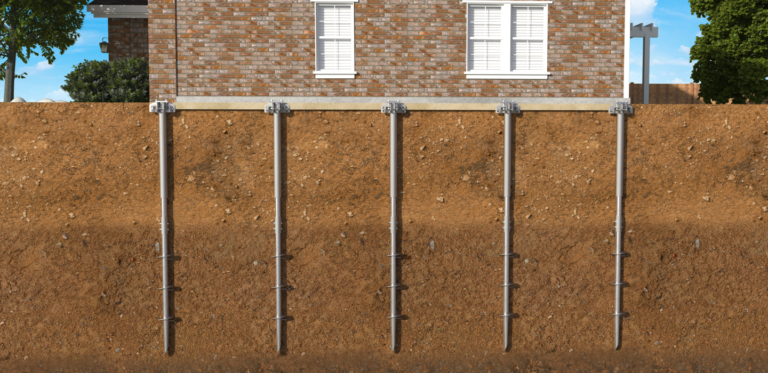Unlocking Stability and Versatility in Construction
When it comes to the stability and resilience of structures, the foundation is a critical element that often determines the success of a construction project. In recent years, helical screw foundations have emerged as a versatile and efficient alternative to traditional foundation systems.

Understanding Helical Screw Foundations
Helical screw foundations, also known as helical piles or screw piles, are innovative structural elements designed to support various types of structures. Unlike traditional concrete foundations, which rely on the sheer weight and friction of the concrete to provide stability, helical screw foundations gain their strength from the soil through a twisting, helical design.
The helical screw itself resembles an oversized screw or auger, featuring a helical blade or blades welded to a steel shaft. During installation, these helical screws are advanced into the soil using hydraulic machinery, rotating and penetrating the ground until they reach the desired depth. This process efficiently transfers the load of the structure to the surrounding soil, creating a robust foundation.
Design Considerations
The design of helical screw foundations takes into account a variety of factors to ensure optimal performance. Soil conditions play a crucial role, influencing the size and spacing of the helical blades. The magnitude of the load the foundation must support, as well as the specific requirements of the structure, guide the selection of the appropriate helical screw design.
Engineers carefully analyse soil composition, bearing capacity and other site-specific conditions to determine the ideal configuration of helical screws. Additionally, factors such as torque, depth and alignment are considered during the installation process to guarantee the foundation’s stability.
Applications Across Construction
One of the key advantages of helical screw foundations lies in their versatility. These foundations find application in a wide range of construction projects, from residential buildings to industrial structures and infrastructure projects. Helical screw foundations are particularly useful in areas with challenging soil conditions, such as expansive clay or loose sand, where traditional foundations may encounter difficulties.
In residential construction, helical screw foundations are employed for supporting decks, additions and even entire houses. In commercial and industrial settings, they provide stable support for equipment, communication towers and other structures. Their adaptability has also made them a popular choice for temporary structures, such as foundation support for event stages and exhibition booths.
Helical screw foundations represent a paradigm shift in the field of foundation engineering, offering a reliable and efficient alternative to conventional methods. Their ability to provide stability in challenging soil conditions, coupled with a straightforward installation process, has positioned helical screw foundations as a go-to solution for a diverse range of construction projects.
As technology continues to advance and the demand for sustainable and cost-effective construction methods grows, helical screw foundations are likely to play an increasingly prominent role in shaping the future of structural engineering. Whether supporting residential homes or large-scale infrastructure projects, the helical screw foundation stands as a testament to innovation and adaptability in the ever-evolving landscape of construction.

